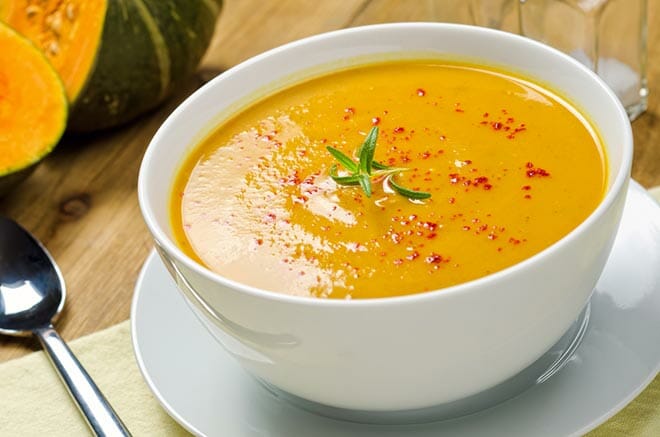As the days grow shorter and the temperatures plummet, people from many countries will select a hot bowl or cup of soup as the meal of choice. This demand, of course, has transformed the small, humble soup into an extremely competitive market for food service soup manufacturers 365 days a year. Thanks to modern technology processes such as canning, condensing, and instant packets, soup is now prepared with little effort. This makes it an even more appealing choice to consumers with various income levels.
How has the soup manufacturing industry evolved for today’s consumers, and what options can food service and private label soup manufacturers take advantage of to stay competitive? Let’s look in further detail.

Soup Manufacturing Then and Now
Canned soup was difficult to ship long distances and didn’t have a long shelf life in the 1800’s. But when the chemist Dr. John T. Dorrance invented the practice of condensing soup in 1897, the soup industry forever changed. Continued demand for convenience foods and an emergency staple in residential kitchens drives forward today’s soup market. In 2016, the international canned soup industry is valued at 9.29 billion U.S. dollars, and it is expected to grow from 2018-2022 by 2.8 percent. 80 percent of this global market demand comes from North America.
The precise practice of manufacturing soup and the equipment used to make the soup, of course, varies with the kind of soup being produced. Although, the general practice is the same in many ways. These basic steps are listed below and include the following:
- Raw ingredients – Selecting fresh meat and vegetable sources is extremely important in the canned soup manufacturing process, as companies partner with farmers who provide only the freshest ingredients possible.
- Making the stock – The raw ingredients for making the stock are placed together in a large vat and boiled for a period of time to produce the base stock for the soup.
- Preparing the ingredients – Several steps at the plant are executed to prepare the raw ingredients for the soup recipe, including washing, chopping, straining, and sorting through them to ensure exceptional quality prior to cooking.
- Combining all parts – Finally, the stock and ingredients are combined to cook and be canned. Spices and preservatives to prolong shelf life are also added. The final canned product is then labeled and stored in designated warehouses ready to ship to stores and millions of customers.
Strainers in Soup Applications
Believe it or not, strainers and wire cloth are major performers in today’s canned soup manufacturing process. Food grade mesh separates bones and impurities during the stock making process. Other impurities such as dirt and other production debris are sorted out of the ingredients with strainers, too. Fine wire cloth processes vegetables into high-quality purees and pastes, resulting in a smooth final product.
The Saniclean Strainer Difference
SaniClean strainers are a product of Newark Wire Cloth, a company with ample experience in wire cloth applications for food service soup manufacturers. Originally founded in 1911, Newark Wire has been around just about as long as the canned soup industry itself! The SaniClean strainer product line delivers a variety of solutions to private label soup manufacturers with wire strainer applications in different viscosities and high flow rates for purity and desirable product consistencies. To learn how Newark’s SaniClean strainers can work at your facility, contact us today. Our knowledgeable staff is ready to assist you.
